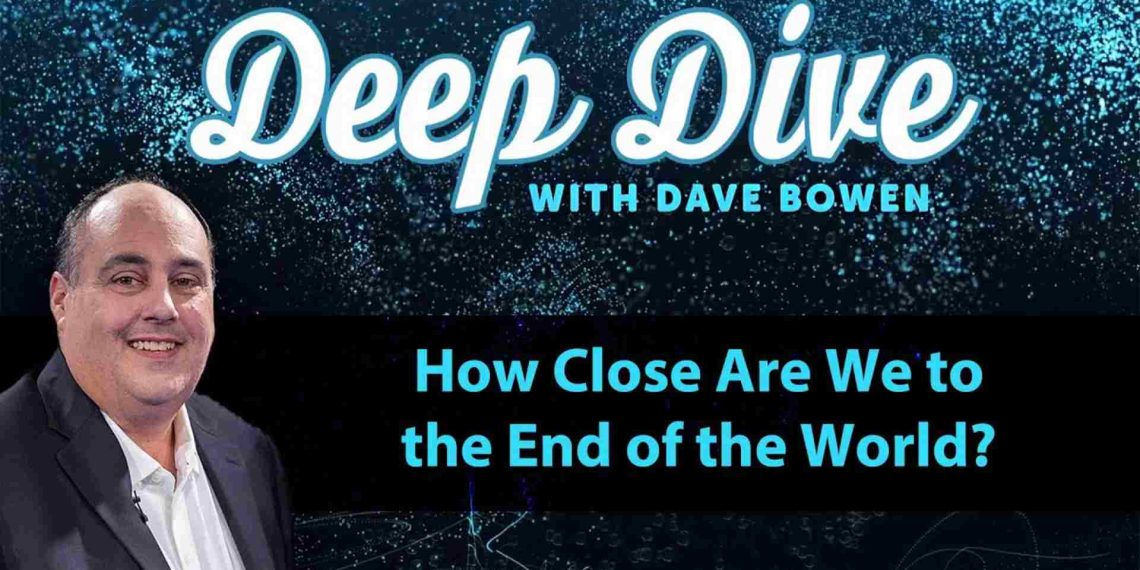Are we on the brink of the end of the world? This question sparks curiosity and debate across cultures, beliefs, and disciplines. One scientific effort to address this question is the Doomsday Clock, a symbolic measurement created by scientists to gauge humanity’s proximity to global catastrophe. But how accurate is it, and how does it compare to what the Bible says about the end times? Let’s explore both perspectives and consider what this means for us today.
Video Summary generated with assistance of AI.
What Is the Doomsday Clock?
The Doomsday Clock was created in 1947 by the Bulletin of the Atomic Scientists, a group founded by Albert Einstein, J. Robert Oppenheimer, and scientists from the Manhattan Project. Using the imagery of a clock approaching midnight, it symbolizes how close humanity is to self-induced destruction. Midnight represents the “end of the world,” and the clock’s time is adjusted annually by the Bulletin’s Science and Security Board.
This clock isn’t based on the latest headlines; instead, its adjustments are informed by three main factors:
- Nuclear Risk – The threat posed by nuclear weapons, war, and proliferation.
- Climate Change – The ongoing impact of human activity on the environment.
- Disruptive Technology – Emerging advancements like artificial intelligence and biotech that could pose unforeseen dangers.
In January 2025, the Doomsday Clock was moved to 89 seconds before midnight—the closest it has ever been. This marks a symbolic warning from scientists about the dangers facing humanity, heightened by conflicts like the war in Ukraine and growing global instability.
A History of Ticking Closer
Since its inception, the Doomsday Clock has been adjusted multiple times, reflecting significant world events:
- 1947: The clock debuted at 7 minutes before midnight.
- 1953: After the U.S. developed the hydrogen bomb, it moved to 2 minutes before midnight.
- 1963: The Partial Test Ban Treaty, aimed at ending nuclear testing in the atmosphere, pushed the clock back to 12 minutes.
- 1991: With the Cold War ending, it reset to 17 minutes, the farthest from midnight in history.
- 2018: Rising tensions from misinformation campaigns and technology misuse dropped it to 2 minutes before midnight.
Now, at just 89 seconds before midnight, the clock reflects an unprecedented combination of global uncertainties.
A Biblical Perspective on the End Times
While scientific viewpoints like the Doomsday Clock focus on external threats, the Bible offers a spiritual lens on the “end of the world.” Scripture outlines clear signs of what it calls the “end times,” a period described as the most tumultuous in human history.
Biblical Warnings
The Bible repeatedly warns about a future of increased turmoil, a departure from faith, and rising deception. Yet, surveys show a decline in biblical understanding even among self-identified Christians.
- A Barna Group study found that 50% of Christians don’t believe in the existence of Satan, and one-third think Jesus sinned during His time on Earth.
- Another survey revealed that 43% of respondents believe Jesus was only a teacher, not God—a stark contradiction to the foundational beliefs of Christianity.
This growing biblical illiteracy highlights the importance of understanding Scripture’s teachings, especially in light of the challenges facing the modern world.
What Does Scripture Say?
The Bible doesn’t call for fear of man-made disasters but warns of God’s divine timeline:
- Romans 10:17: “Faith comes from hearing, and hearing by the Word of God.”
- Luke 11:28: “Blessed are those who hear the word of God and obey it.”
- Philippians 2:8-11: Jesus, “humbled himself by becoming obedient to the point of death, even death on a cross… so that at the name of Jesus every knee should bow.”
These passages remind us to center our understanding of the future on God’s Word rather than human speculation.
The Role of Worldview
Our worldview shapes how we interpret all of this—whether we see the Doomsday Clock as a countdown or view the Bible as an immovable foundation. A biblical worldview provides boundaries, ethics, and hope, yet research indicates many pastors and church leaders lack this solid foundation.
A Cultural Research Center survey found that only 37% of Christian pastors in America hold a biblical worldview. Younger pastors, in particular, often adopt a “hybrid belief system” blending religious and secular philosophies. This raises an urgent question: if spiritual leaders lack a biblical perspective, how can their congregations develop one?
This disconnect challenges believers to seek clarity and truth from Scripture. Without a commitment to God’s Word, we risk being led astray by popular narratives and false teachings.
Looking Beyond the Doomsday Clock
While the Doomsday Clock provides a thought-provoking metaphor, it doesn’t determine the world’s destiny. The Bible offers a clear and unshakable roadmap for the future. It warns that hardship and spiritual deception will increase, but it also points to the hope and redemption found in Jesus Christ.
Scripture reminds us that humanity’s future isn’t in the hands of scientists, politicians, or technology—it rests in God’s sovereign plan. As we face uncertainty, we’re called to look up, trust in Jesus, and live out our faith boldly.
Conclusion
The ticking of the Doomsday Clock warns us to take humanity’s challenges seriously. But it’s God’s Word that outlines the ultimate story of the world’s end—and new beginning. Whether the clock sits at 7 minutes or 89 seconds to midnight, the Bible calls us to prepare our hearts and trust in Him.
As we reflect on these warnings, let’s focus on Scripture’s timeless truths and look ahead with hope: “Maranatha, Lord Jesus.”



